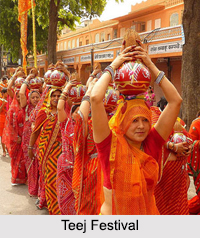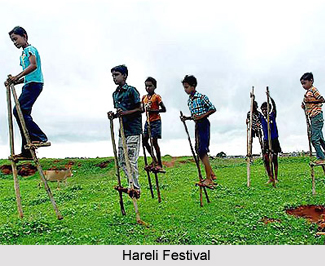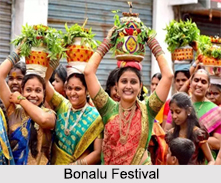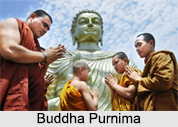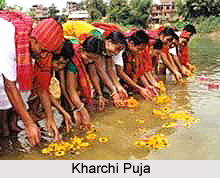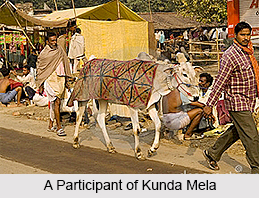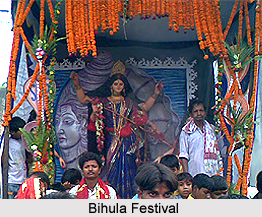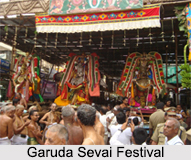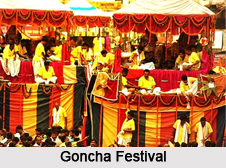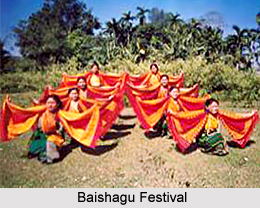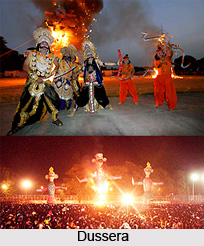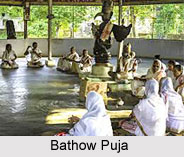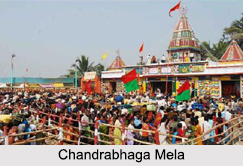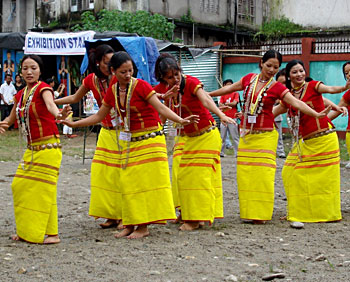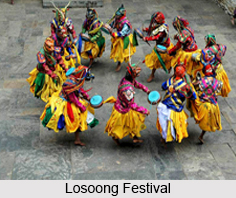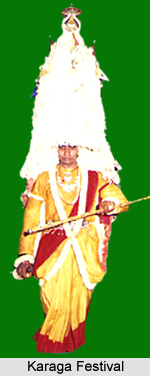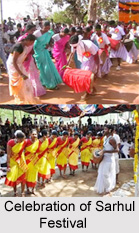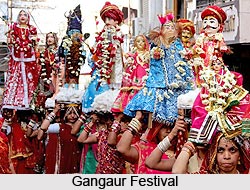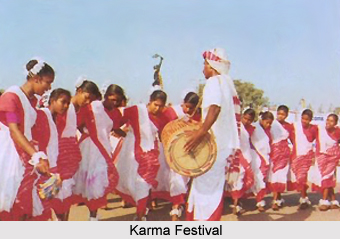Reckoned as one of the littoral districts of Orissa, Puri is one of the fascinating lands comprising sun, sea and temples. The rich cultural ethnicity of Puri, with its long recorded history still can be experienced amidst the historical relics, monuments and in the midst of the verve of the fiestas. Puri, the land of Lord Jagannath is far famed as the City of Festivals. Throughout the year about sixty-two festivals are feted in great spirit and exuberance. Fascinatingly, all these festivals are associated with Lord Jagannath. Due mention of these festivals are found even in the ancient scriptures of Puranas like Brahma, Skanda and Padma. For instance in Niladri Mohadayam, one can find a detailed account of these festivals that are related to Purusottam Jagannath.
Amongst the festivals of Puri quite a few can be described as
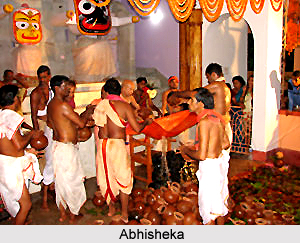 Abhisheka
Abhisheka
Abhisheka marks the start of the chain of all those festivals of Puri related to Lord Jagannath. Abhisheka, also known as `Avhisheka` marks the coronation ceremony of the Lord, held on the full moon day in the month of `Pausha` i.e. months of December and January. Keeping in mind the time of its celebration, people also call it Pushyavisheka, meaning `coronation done in Pausha month`.
Dolayatra
Dolayatra, or the festival of colours, is celebrated from the tenth day of the bright fortnight of Falguna (March to April) till the full moon day. Just like the entire nation, residents of Puri also go gaga with the fervour of festivity. Truly it is one of the famous festivals of Puri where people abide by rituals in their true spirit. Dolagobinda or Madan Mohan is enshrined on a swing and also coloured powder or abira is put on his feet.
Chandanyatra
Starting on the 3rd day of the bright fortnight of Baisaksh Akshay Trutiya , this spectacular festival continues for twenty-one days the time period being from April to May. At the time of the festival idols of deities namely Krishan , Rama, Madan Mohan , Saraswati and Laxmi are taken out in a beautiful procession to Narendra Tank. Along with them five Shivas or Pancha Pandavas like Lokanath, Yameswar, Markandeya, Kapal Mochan and Nilakanth are brought outside. Idols of Madan Mohan, Laxmi and Saraswati are placed in a boat, nicely decorated . Rama, Krishna and all the five Shivas are placed in another boat. Cruising of the celestial gods are done in accompaniment of music and songs. Thus it is called the outer Chandan Yatra.
Snana Yatra
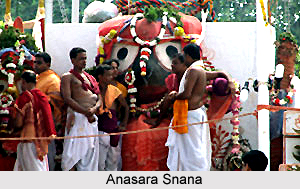 Popularly acclaimed as Snana Yatra , this counts among the popular festivals of Puri. It is held on the auspicious full moon day of Jyestha ( May- June). This is the day when the three deities along with Lord Madan Mohan and Sudarshan are taken outside. At the end of a colourful procession, they are taken to the outer enclosure of the temple. Snana Vedi is the bathing platform where they are placed to perform the holy rite of bathing accompanied by 108 pitchers of water drawn from a well near the Northern Gate.
Popularly acclaimed as Snana Yatra , this counts among the popular festivals of Puri. It is held on the auspicious full moon day of Jyestha ( May- June). This is the day when the three deities along with Lord Madan Mohan and Sudarshan are taken outside. At the end of a colourful procession, they are taken to the outer enclosure of the temple. Snana Vedi is the bathing platform where they are placed to perform the holy rite of bathing accompanied by 108 pitchers of water drawn from a well near the Northern Gate.
Anasara
Anasara follows the of Snana Yatra. After the completion of holy bathe, the deities remain in the Anasar House for a period of fifteen days. At that time nobody, not even the priests or Pandas, are allowed to enter the house. It is believed that the deities are infected with fever due to exposure to prolonged bathes. At that time only a class of `Sevaks` of the temple, called Daitas are allotted the duty of revering them secretly.
Chitalagi Amavasya
It is observed on the new moon day of the month of Srabana, i.e. July. No grand rituals and festivities are associated with Chitalagi Amavasya. However numerous people assemble in the temple premises to catch a glance of the gaudy ornaments of the three idols, exhibited during the festival of bathing.
Sri Gundicha or Car festival
Every year the coastal area comes alive with the celebration of Sri Gundicha or Rath Yatra. This is one of the most admired festivals of Puri. It has worldwide fame. Millions of devotees gather in Puri to behold the grandness of this festival. Usually held on the 2nd day of the bright fortnight of Asadha, it falls in the months of June and July. On this day, the 3 deities of Jagannath, Balabhadra and Subhadra are brought out from the main temple of Lord Jagannath for public viewing. Travelling on three newly built huge chariots made up entirely of wood, they move forward to the Gundicha Temple, lying almost three km away.
Nava Kalebara
Nava Kalebara is another ritual associated with this car festival of Puri. It implies a process of renewal of body. It is believed according to the Hindu calendar, once in every twelve years, gods and goddesses discard their old frames and metamorphose into new idols.
It is a sacred ritual, feted by the illustrious temple priests. Choosing and dropping of the tree, cutting and drawing new images and most importantly transmission of the celestial spirit from the old to the new frame are some of the ritualistic functions that they need to perform with reverence.
Bahuda Yatra.
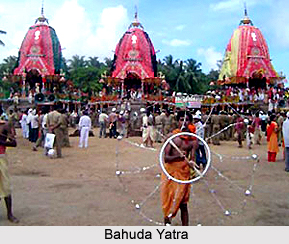 After staying in the Gundicha Temple for 7 days the idols are brought back to the main temple on the chariot. This occasion is popular as Bahuda Yatra. On the way, the chariots halt at various spots. Mausima Temple is one such stop where deities are offered with baked cakes, popularly known as Podapitha. On the auspicious day of Ekadeshi, the deities reach the Lion`s gate of the Jagannath temple. They wear beautiful gold ornaments or Suna Vesa. Special sarbat , known as Adharpana is offered to them. In the following day the deities are taken into the temple to `Ratna Vedi`. Its popular name is Niladri vije. This marks the end of the car festival.
After staying in the Gundicha Temple for 7 days the idols are brought back to the main temple on the chariot. This occasion is popular as Bahuda Yatra. On the way, the chariots halt at various spots. Mausima Temple is one such stop where deities are offered with baked cakes, popularly known as Podapitha. On the auspicious day of Ekadeshi, the deities reach the Lion`s gate of the Jagannath temple. They wear beautiful gold ornaments or Suna Vesa. Special sarbat , known as Adharpana is offered to them. In the following day the deities are taken into the temple to `Ratna Vedi`. Its popular name is Niladri vije. This marks the end of the car festival.
Jhulan Yatra
The whole region decks up in new colours and vivacity, when the time of celebrating Jhulan Yatra draws near. In the true sense, Jhulan Yatra is one of the important festivals of Puri. Feted every year in the premises of `the Temple` and in several `Maths in Puri`, this festival lasts for six days. It starts from the tenth day of the dazzling fortnight of Shrabana (June-July) till the 1st day of Bhadraba (July-August). Jhulan Yatra is the occasion of joy when idols of deities like Vishnu and Laxmi are placed on a swing of `Jhulan Mandap` with full decorations. They are swung to and fro to the rhythm of beats of music and songs.
Satapuri Amabasya Festival of Puri
The month of August, known as Bhadraba in Hindu calendar, is the time to celebrate Satapuri Amabasya, one of the significant festivals of Puri.
Radhastami Festival of Puri
Radhastami Festival of Puri is a joyous occasion when devotees revere the idol of
Sudarsana. It is the festival that is closely associated with Lord Krishna`s consort, Radha. On the auspicious day of Radhastami, Sudarsana circumvallates the inner area of the Temple.
Ananta Chaturdarshi Festival
In the vista of Puri festivals, Ananta Chaturdarshi Festival holds a place of special significance. Ever year in the Bhadrava month (August) people enthrall in the joyful mood of this festival. On the very day a social ceremony is observed in the Ananta Basudev temple.
Sahasra Kumbha Avisekha
It marks the celebration of consecrating thousand vessels, which begins on the eighth day of the murky fortnight in `Aswina` or October. On this auspicious day goddess Vimala along with few other goddesses are revered following the Sakta or Tantric rites. The famous Autumnal festival also commences with Sahasra Kumbha Avisekha.
Dasahara Festival
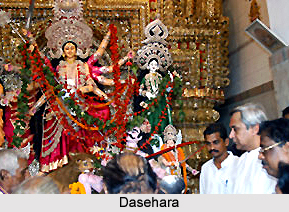 With the completion of Sahasra Kumbha Avisekha, time comes to fete the Dasahara festival with same jubilance and enthusiasm. It is the festival of worship of weapons. During this festival Duraga Madhav Puja is performed. It bears special significance in the community of conventional farmers. They are called Paikas, who once upon a time formed an integral part of martial troupes of Orissa state.
With the completion of Sahasra Kumbha Avisekha, time comes to fete the Dasahara festival with same jubilance and enthusiasm. It is the festival of worship of weapons. During this festival Duraga Madhav Puja is performed. It bears special significance in the community of conventional farmers. They are called Paikas, who once upon a time formed an integral part of martial troupes of Orissa state.
Kumar Purnima Festival
Kumar Purnima is observed in Aswini month. Innumerable festivals constitute Puri, amongst them this festival deserves special mentioning. Legend says that `Kumar` or `Kartikeya`, the good-looking son of Lord Shiva was born on this auspicious day. Later he was revered as the `God of war`. Interestingly no such ritual is observed for worshipping this God. Instead the Sun and Moon are adored by a myriad of devotees. As a key ritual, ladies take a bath for purification of their bodies. Dressing up in new clothes and offering food to the Sun god are carried on afterwards. Throughout the day they keep on fasting. During evening when the moon shines, they offer a special variety of food to the God. Only when the rituals are completed they can consume food. Music and dance form an integral part of it. Girls dance and sing raising the tempo to its fullest. Apart from singing special type of songs, they also love to play Puchi, a unique game. Women also engage themselves in playing other type of country games.
The Gajalaxmi Puja
This holy day is also feted as the birthday of Goddess Laxmi, the deity of wealth. Folk legend speaks of two sets of priests playing dice. One represents Lord Jagannath and the other goddess Laxmi. It is however not known for certain who wins or loses the game. Quite a number of people revere the Goddess in their respective homes. They keep themselves awake by playing Pasha (Chess), and a few more indoor games. If any one desires to gain wealth they should be on vigil throughout the night. It is a popular faith of the believers.
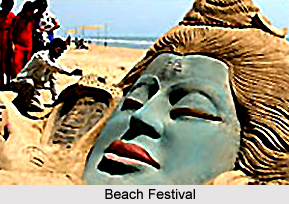 Apart from these, there are handful of festivals that are observed by all the pious residents of Puri. They include- Sayan Ekadasi , Samazik Chori, Chitalagi, Gamha, Purnima, Krishan- Lil , Magha Purnim , Bakula Amabasy, Odham Sasthi and many more. In present times, effort is being exercised to attract tourists from all over the country. Organised in the months of April and November the Puri Sahi Yatra and Beach festival captivates the tourers, who are utterly mesmerised seeing the extravaganza associated with these festivals.
Apart from these, there are handful of festivals that are observed by all the pious residents of Puri. They include- Sayan Ekadasi , Samazik Chori, Chitalagi, Gamha, Purnima, Krishan- Lil , Magha Purnim , Bakula Amabasy, Odham Sasthi and many more. In present times, effort is being exercised to attract tourists from all over the country. Organised in the months of April and November the Puri Sahi Yatra and Beach festival captivates the tourers, who are utterly mesmerised seeing the extravaganza associated with these festivals.
Festivals of Puri truly reflects the social and cultural heritage of the entire region. People look forward to participate in the festivity forgetting all the sorrow and tribulations of their mundane daily life.
